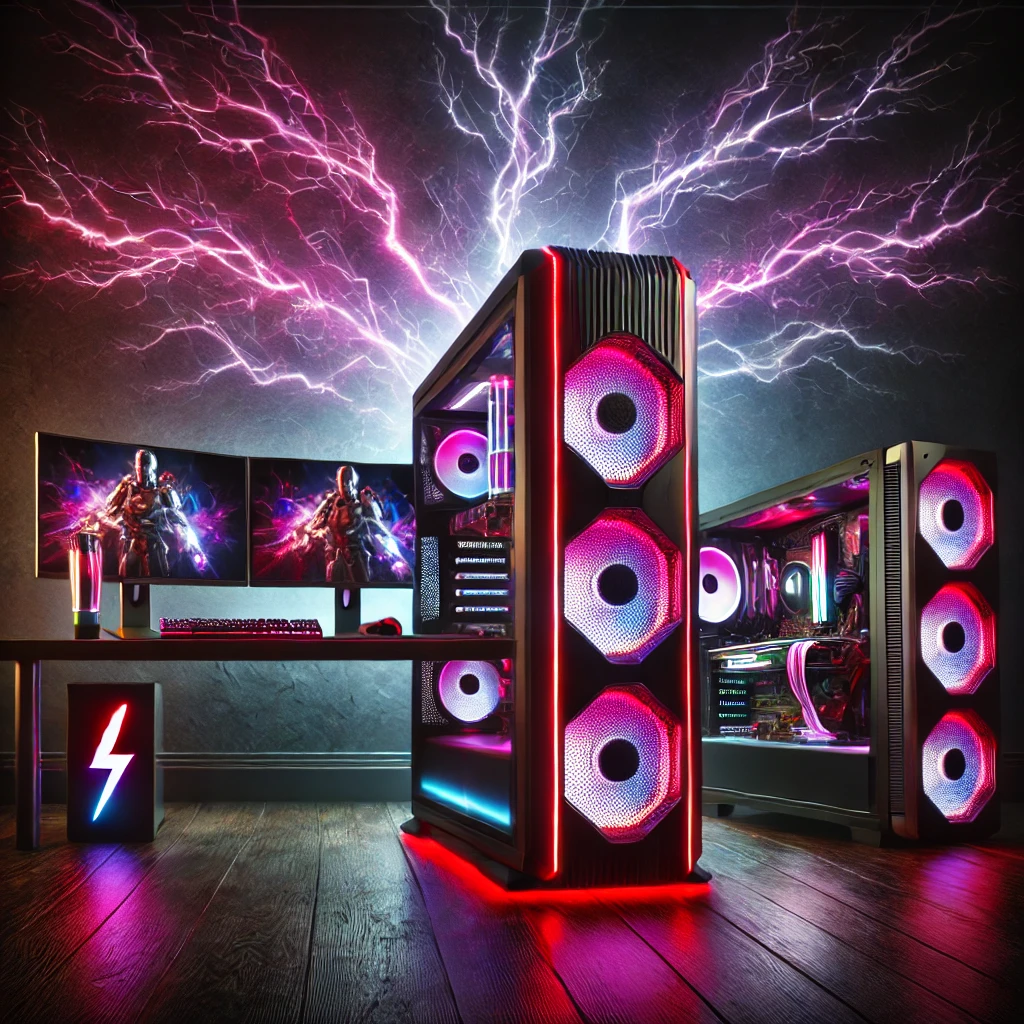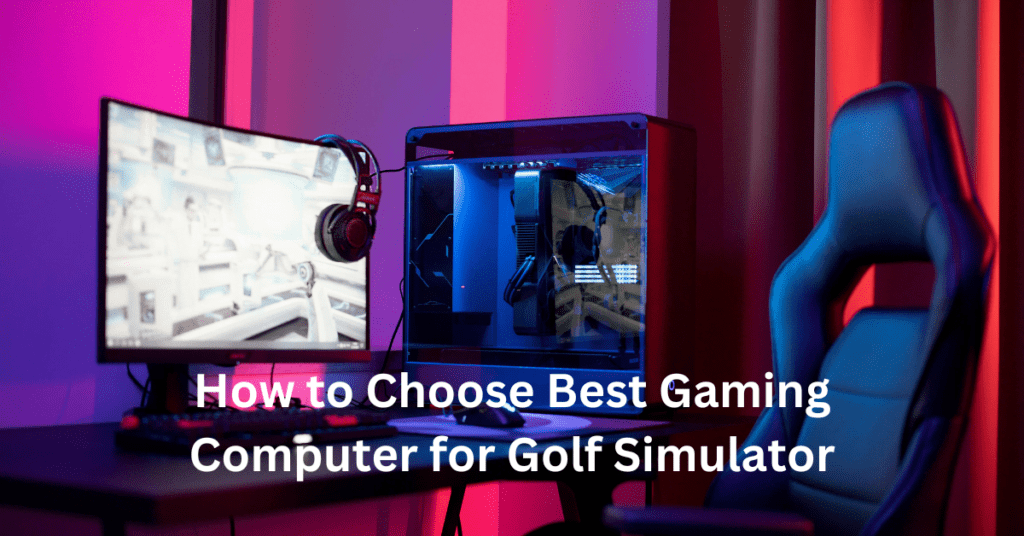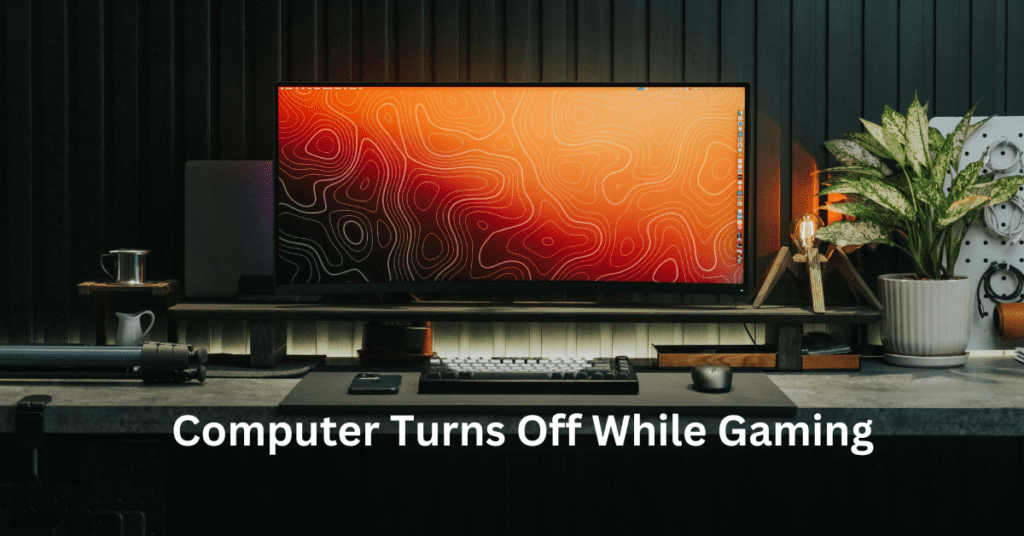Have you ever wondered just how much electricity your gaming PC consumes during those intense gaming sessions? It’s a question that many gamers and tech enthusiasts often overlook, but it’s more important than ever in a world where energy costs are rising, and environmental concerns are growing. A typical gaming computer, with its powerful CPU, GPU, and cooling systems, is a high-performance machine that can draw a significant amount of electricity, especially during prolonged use. For gamers who spend hours immersed in the latest AAA titles, this could mean not only a spike in their electricity bills but also a larger carbon footprint. Do Gaming Computers Use A Lot Of Electricity
Understanding the electricity consumption of gaming computers is crucial, not just for managing household energy costs, but also for making informed choices about sustainability. Whether you’re a casual gamer or someone who takes gaming seriously, knowing how much power your setup consumes can help you optimize your gaming experience while being mindful of your energy usage. In this article, we’ll explore how much electricity gaming PCs typically use, compare them to other devices, and provide actionable tips on how you can reduce your gaming PC’s power consumption without sacrificing performance.

Understanding Electricity Consumption in Gaming Computers
Electricity consumption refers to the amount of electrical energy used by a device, measured in units like watts (W) and kilowatt-hours (kWh). Watts indicate the power draw of a component at any given moment, while kilowatt-hours represent the total energy consumed over time. For example, if a gaming computer operates at 500 watts for two hours, it consumes 1 kWh of electricity. Understanding these terms is crucial for gamers who want to manage their energy usage effectively.
Several factors influence the electricity usage of gaming PCs. Hardware components like the CPU, GPU, RAM, and cooling systems are the primary contributors to power consumption. High-performance CPUs and GPUs, especially when running demanding games, draw significantly more power, leading to higher electricity usage. Meanwhile, usage patterns also play a role; a gaming PC in idle mode consumes less power than during an intense gaming session. Additionally, peripheral devices such as monitors, gaming keyboards, mice, and external drives add to the overall energy consumption. Even when not in active use, these peripherals can contribute to the total power draw, highlighting the importance of managing all aspects of a gaming setup to optimize electricity consumption.
Comparing Electricity Consumption: Gaming PCs vs. Other Devices
When comparing the electricity consumption of gaming PCs to other devices, the differences can be significant. High-end gaming PCs typically use more power than popular gaming consoles like PlayStation, Xbox, or Nintendo Switch. This is largely due to the more powerful hardware components in gaming PCs, such as advanced GPUs and CPUs, which require more electricity to deliver top-tier gaming experiences. While consoles are designed to balance performance with energy efficiency, gaming PCs prioritize raw power, leading to higher energy usage.
When comparing gaming PCs to regular desktop computers, the gap in electricity consumption becomes even more apparent. Standard desktops, used for everyday tasks like browsing the web or working on documents, usually have less demanding hardware. In contrast, gaming PCs are equipped with high-performance components like overclocked processors, dedicated graphics cards, and extensive cooling systems, all of which contribute to increased power draw.
Gaming laptops, while portable and generally more energy-efficient than desktops, still consume more power than regular laptops due to their specialized hardware. However, gaming laptops often benefit from power management features and battery optimization, which can reduce their electricity usage when not connected to the grid. Despite these features, gaming laptops still trail behind desktops in overall performance and power efficiency.
Real-World Examples: How Much Electricity Does a Gaming PC Use?
When it comes to understanding the electricity consumption of gaming PCs, real-world scenarios offer valuable insights. A typical gaming session can vary widely in power usage depending on the type of activity. For instance, playing a graphically intense AAA title like Cyberpunk 2077 or Red Dead Redemption 2 can push your gaming PC’s power consumption to its limits. In such cases, a high-end gaming PC with a powerful GPU, like the NVIDIA RTX 3080, and a high-performance CPU, such as the AMD Ryzen 9, might draw around 400 to 600 watts per hour.
To put this into perspective, if you game for around 4 hours daily, your PC could be consuming approximately 720 kWh annually, considering an average draw of 500 watts per hour. In comparison, lighter gaming activities, like playing indie games or older titles, may reduce power consumption significantly, sometimes drawing as little as 150 to 250 watts per hour.
Let’s examine specific case studies of different gaming PC builds. A budget build with a modest GPU like the GTX 1650 and a mid-tier CPU might consume around 200 to 300 watts during peak gaming. On the other hand, a mid-range setup featuring an RTX 3060 and an Intel i5 could draw between 300 to 450 watts. High-end builds, equipped with top-tier components, often exceed 600 watts during intense gaming sessions, especially when overclocking is involved. Overclocking, while boosting performance, can substantially increase electricity usage, sometimes by as much as 20-30%.

The Environmental Impact of Gaming Computers
The environmental impact of gaming computers is increasingly becoming a topic of concern, especially as the popularity of high-performance gaming continues to rise. The electricity consumption of gaming PCs directly contributes to their carbon footprint, as most electricity is still generated from fossil fuels like coal and natural gas. When a gaming computer uses a significant amount of electricity, the result is a higher output of carbon emissions. This impact is further amplified by the energy demands of modern gaming PCs, which are often equipped with powerful GPUs and CPUs that require substantial power to operate efficiently.
In regions where electricity is primarily sourced from non-renewable energy, the environmental implications are more pronounced. For example, in areas heavily reliant on coal or natural gas, the electricity used by gaming computers contributes directly to higher greenhouse gas emissions. This not only affects the environment locally but also has a broader impact on global climate change. The energy consumption of gaming PCs thus becomes a critical factor in discussions about sustainable gaming practices.
On the other hand, in regions where renewable energy sources like solar, wind, or hydroelectric power are more prevalent, the environmental impact of gaming computers can be mitigated. Countries that have made significant investments in green energy infrastructure offer gamers the opportunity to enjoy high-performance gaming with a reduced carbon footprint. This highlights the importance of supporting renewable energy initiatives and choosing energy-efficient gaming setups, which can make a substantial difference in reducing the overall environmental impact of gaming. As the gaming community becomes more aware of these issues, there is a growing interest in finding ways to minimize electricity usage while still enjoying the latest gaming experiences.
Reducing electricity consumption in gaming PCs doesn’t have to mean sacrificing performance. A few strategic hardware upgrades can make a significant difference. For example, upgrading to energy-efficient components like GPUs, CPUs, and power supplies can reduce overall power usage while still delivering the high performance that gamers crave. Many modern components are designed to be both powerful and energy-efficient, striking a balance that benefits both your gaming experience and your electricity bill. Additionally, undervolting your CPU or GPU—adjusting the voltage settings to reduce power draw—can further optimize energy consumption without affecting performance. This can usually be done through your PC’s BIOS or dedicated software.
Software and settings adjustments are also crucial for managing power usage. By optimizing in-game settings, you can reduce the workload on your hardware, which in turn decreases power draw. Lowering settings like resolution, frame rate, and texture quality can have a noticeable impact on electricity consumption. Furthermore, taking advantage of power management settings in Windows or other operating systems can help you control energy use when your gaming PC is idle or performing less demanding tasks.
Proper cooling and ventilation are essential for maintaining efficiency. Overheating can cause your PC to consume more power as fans work harder to cool it down. Ensuring that your gaming PC has adequate airflow and is equipped with efficient cooling solutions, such as liquid cooling or high-performance fans, can reduce the strain on your system and, consequently, its electricity consumption.
Finally, managing peripherals is an often overlooked aspect of reducing power usage. Turning off or disconnecting peripherals like external drives, gaming controllers, and even monitors when not in use can save electricity. Opting for energy-efficient peripherals, such as monitors with lower power consumption, can also contribute to a more energy-conscious gaming setup.
Financial Considerations: How Much Does Gaming Really Cost?
The financial impact of gaming goes beyond just the initial investment in hardware; the ongoing cost of electricity can add up significantly over time. Calculating the cost of electricity for a gaming computer is straightforward. First, determine the power consumption of your gaming PC, usually measured in watts. Multiply this by the number of hours you game per day, then divide by 1,000 to convert to kilowatt-hours (kWh). Finally, multiply the kWh by your local electricity rate, typically provided in cents per kWh, to find out how much your gaming sessions are costing you.
For example, if your gaming PC uses 500 watts and you game for 3 hours a day, that’s 1.5 kWh per day. At an electricity rate of 12 cents per kWh, you’re spending about 18 cents per day on gaming. Over a month, that’s around $5.40, and over a year, it totals approximately $65.70. While this may not seem like much, small changes, like reducing gaming hours or optimizing your system’s power settings, can lead to noticeable savings.
Investing in energy-efficient components is another effective way to reduce long-term costs. Upgrading to a more efficient power supply unit (PSU) or using components that draw less power, like a lower-wattage GPU, can significantly decrease your gaming PC’s electricity consumption. Additionally, using smart plugs or energy monitoring devices allows you to track and manage power usage more effectively. Over time, the initial investment in energy-efficient technology can pay off by reducing your electricity bills, making it a cost-effective strategy for avid gamers who spend many hours in front of their screens. By being mindful of these factors, you can enjoy your gaming experience without breaking the bank.
Future Trends: Energy Efficiency in Gaming Technology
As gaming continues to evolve, so too does the focus on energy efficiency within the industry. One of the most promising trends is the development of energy-efficient gaming hardware. Companies are innovating with low-power GPUs and CPUs designed to deliver high performance while minimizing electricity consumption. These advancements not only reduce the energy draw of gaming PCs but also lower the overall carbon footprint, making gaming more sustainable.
AI-driven power management is another exciting area of growth. By analyzing usage patterns and dynamically adjusting power settings, AI can optimize energy consumption without compromising the gaming experience. This technology allows for more efficient use of resources, particularly during intense gaming sessions, further enhancing the energy efficiency of gaming computers.
Manufacturers are increasingly recognizing the importance of sustainability, with many leading brands committing to greener practices. From sourcing eco-friendly materials to designing components that consume less power, the industry is making significant strides toward reducing the environmental impact of gaming. As these trends continue to develop, gamers can expect to see more energy-efficient options that allow them to enjoy their favorite hobby responsibly and sustainably.

Conclusion
In this article, we explored the various aspects of gaming PC electricity consumption, including the factors that influence power usage, such as hardware components, usage patterns, and peripheral devices. We compared the energy consumption of gaming computers with other devices like consoles, regular PCs, and laptops, providing a clear picture of how much electricity a typical gaming setup might use. Additionally, we discussed the environmental impact of high energy consumption in gaming and offered practical tips for reducing electricity usage, such as optimizing hardware, adjusting software settings, and managing peripherals more efficiently.
As gaming enthusiasts, it’s important to be mindful of the electricity our gaming computers consume. By making small adjustments to our setups, we can significantly reduce power usage without compromising performance. Whether it’s investing in energy-efficient components or simply tweaking in-game settings, every step counts towards a more sustainable gaming experience. Ultimately, being aware of how much electricity your gaming PC uses not only helps in cutting down on energy costs but also contributes to a broader effort in reducing our carbon footprint. Take the time to evaluate your gaming habits and consider implementing some of the energy-saving tips discussed in this article.
FAQs for do gaming computers use a lot of electricity
1. How much electricity does a gaming PC typically use?
A gaming PC’s electricity consumption varies based on its components and usage. On average, a high-end gaming PC might use between 300 to 600 watts during intense gaming sessions. Over a year, this can translate to several hundred kilowatt-hours (kWh) of electricity, depending on how often and intensely you game.
2. Does a gaming PC use more electricity than a gaming console?
Yes, gaming PCs generally use more electricity than gaming consoles. This is because PCs are equipped with more powerful components, like high-performance GPUs and CPUs, which require more power. Consoles are typically designed to be more energy-efficient but offer less flexibility and power compared to gaming PCs.
3. What can I do to reduce the electricity consumption of my gaming PC?
There are several ways to reduce your gaming PC’s electricity consumption:
– Upgrade to energy-efficient components.
– Optimize in-game settings to reduce power draw.
– Use power management settings in your operating system.
– Properly cool and ventilate your PC to ensure it runs efficiently.
4. Is it expensive to run a gaming PC in terms of electricity costs?
The cost of running a gaming PC can add up, especially if you game frequently or have a high-end setup. However, by calculating your PC’s power usage and the cost per kilowatt-hour charged by your electricity provider, you can get a clear estimate. Implementing energy-saving practices can help reduce these costs.
5. Are gaming laptops more energy-efficient than gaming desktops?
Generally, yes. Gaming laptops are designed to be portable and often come with energy-saving features like battery power management. While they may not offer the same level of performance as a desktop, they are typically more energy-efficient, especially when used on battery power. However, during high-performance tasks, a gaming laptop’s energy consumption can approach that of a gaming desktop.




